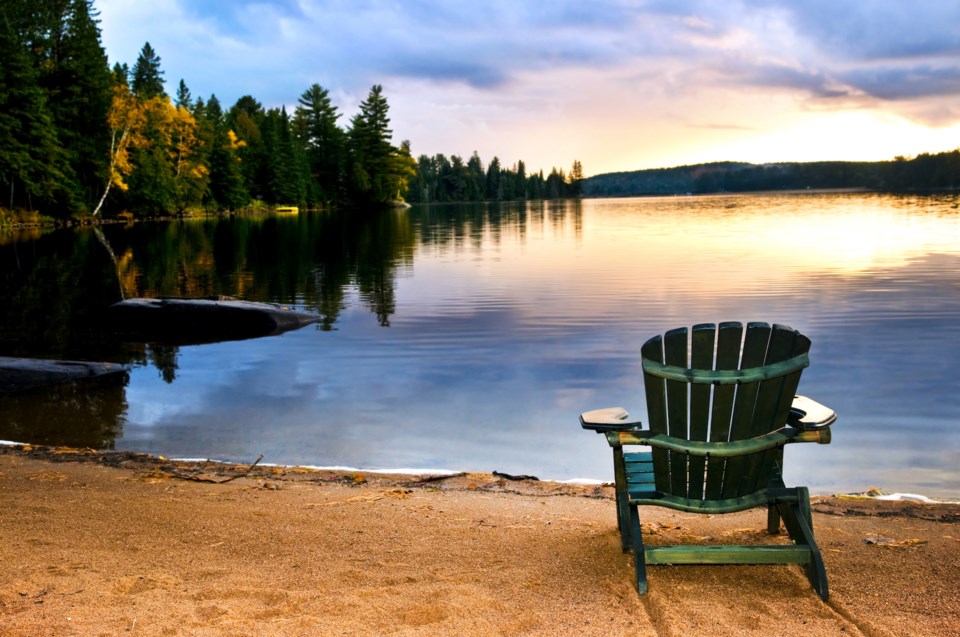For some, Canada’s summer weekends are spent at a cottage. But this year, the COVID-19 pandemic has sharpened the edges on the rural-urban divide. Both Ontario Premier Doug Ford and Prime Minister Justin Trudeau have faced criticism for going to their respective summertime homes.
But not all cottagers are political leaders. Cottagers say they should be allowed to visit seasonal properties, with some threatening to withhold their property taxes if they’re kept away.
Meanwhile, year-round residents are worried that summertime visitors will bring the risk of a second wave that could overwhelm under-resourced rural healthcare systems.
The Canadian Charter of Rights and Freedoms enshrines mobility rights. But those rights are chafing up against requests to temporarily lay down this entitlement in the collectivist spirit of public health orders. The coronavirus pandemic has escalated existing tensions in a complicated, ongoing negotiation between the “right to be rural” and trends toward “disaster gentrification” driven by urban flight.
Balancing individual actions against their community impact
In 1968, French sociologist Henri Lefebvre first offered “the right to the city” as an invitation to reclaim urban life by putting people at the heart of civic decision-making and prioritizing collective experiences over individual entitlements. This inspired civic movements across the globe right up to present-day conversations about digital rights.
Leveraging that concept, sociologists Laura Barraclough and Karen Foster are looking at whether there is also a “right to the countryside” or a “right to be rural.” In cottage country conflicts, however, we find ourselves without an instruction manual to help navigate impossible questions about who has the right to be rural — and who gets to decide?
Cottagers aren’t necessarily outsiders: they pay property taxes, support local businesses and many have multi-generational ties to their seasonal communities. Further, for many rural communities, asking cottagers to stay away has immediate and long-term socioeconomic costs: when people stay home, their money stays with them and they may rethink continued investments in a seasonal property in the future. The cumulative impact is a vicious cycle of private disinvestment compounding chronic under-investment in rural communities.
However, rural residents remain concerned about the risks of virus spread for delicate local ecosystems. Rural health-care capacity is often extremely limited. Experts continue to urge people to limit non-essential travel and to stay home for everyone’s sake.
First Nations that lease land to cottagers have closed their borders. Grocery stores and essential services in rural regions are struggling to adjust to the new reality of challenged supply chains in the same way as their urban counterparts.
And yet these conversations dehumanize the people involved across all aspects of this conflict. Rural people are talked about as if they’re just part of the landscape.
As individual property and mobility rights clash with collective efforts to mitigate the COVID-19 crisis, it appears as if we might be losing our basic connection and responsibility to each other and entering an impossible debate over whose rights count more.
Urban flight and rural gentrification
If you are an essential worker making minimum wage, it is understandably difficult to empathize with people who feel aggrieved at being asked to temporarily choose between multiple residences during this crisis — a luxury not necessarily afforded those most impacted by the consequences of these choices. Still, there are complex reasons why rural residents might themselves embark on essential inter-regional travel, like going to urban centres for specialist care or accessing essential goods; rural-urban linkages mean the road goes both ways.
Ultimately, this conflict hinges on deeper questions about the geography of wealth, privilege and structural inequality. As sociologist Tressie McMillan Cottom argued, “wealth is the vector.” If British writer and critic John Lancaster is right that “geography is destiny,” the displacement and replacement processes of rural gentrification must be critically examined.
More than half of Ontario’s new cases of COVID-19 are occurring in Toronto. Meanwhile, Montréal is the epicentre of the virus’ outbreak in Canada. As real or imagined connections between density and disease percolate in people’s minds and remote work becomes the norm for many white-collar professions, urban flight may create more long-term shifts in rural areas that must be approached carefully if we are to avoid deepening geographic and socio-economic divides.
We need carefully considered rural policy and investments that put equity at the heart of imagining the future of the right to be rural. Whether in cities like Vancouver or Montréal or in rural towns like Tobermory, Ont., or Bird Cove, N.L., responses and interventions must respect and respond to local needs and goals.
We have a tendency to turn our fight or flight instinct into unhelpful us-versus-them dichotomies. Painting the country (or each other) with the broad strokes of “rural versus urban” only exacerbates that.
Surviving this pandemic requires a balance between our individual actions and their community impacts. While you might have a right to visit your cottage during the pandemic, ensuring our shared future will require patience and the reimagining of the right to be rural as a civic responsibility.
This article is republished from The Conversation under a Creative Commons license. Read the original article.
